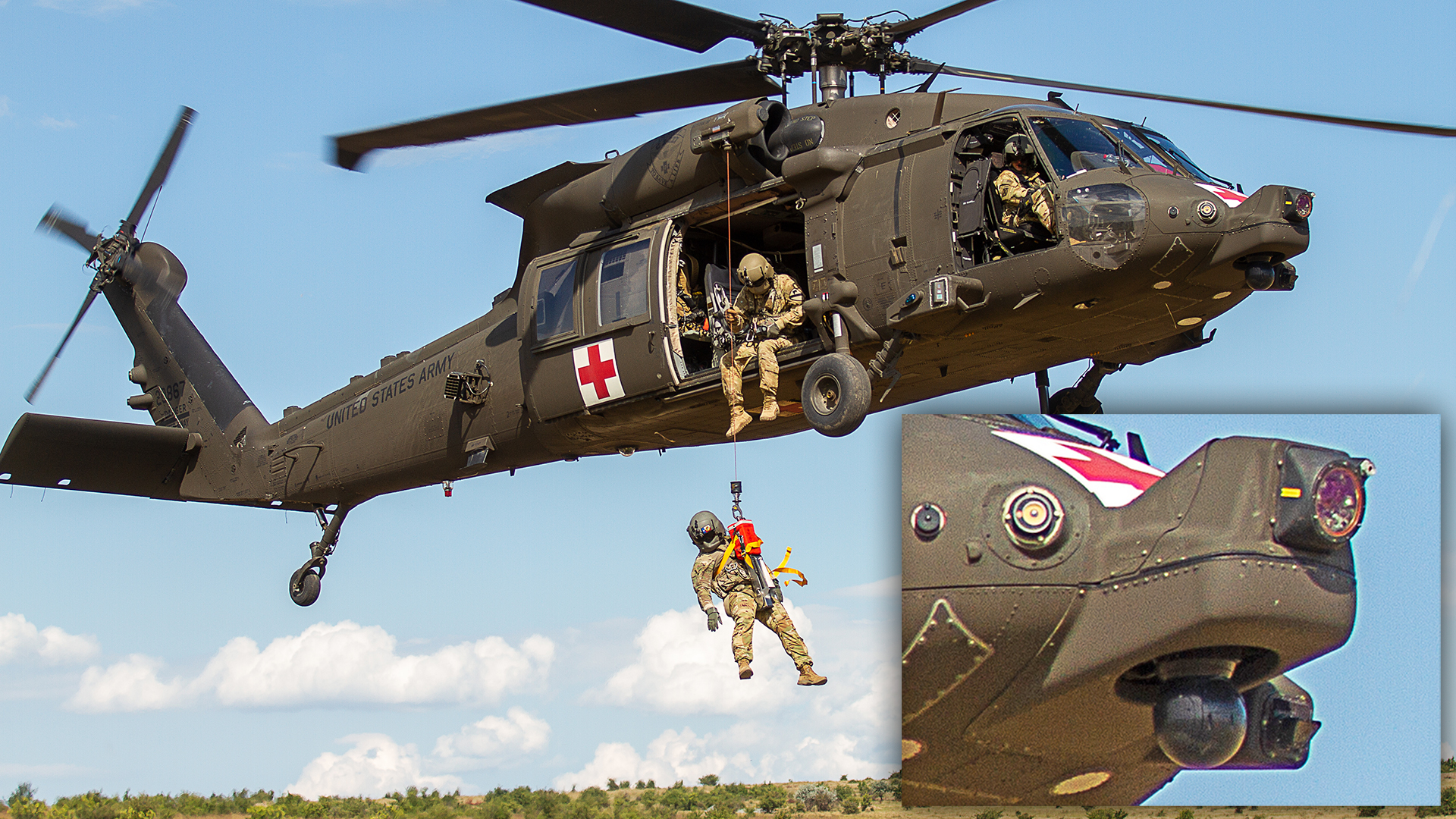UH 60 Black Hawk Variations: Differences and Specs
UH 60 Black Hawk Variations: Differences and Specs
Blog Article
Recognizing the Function and Importance of Various UH60 Components in Aviation Operations
In the elaborate world of aeronautics operations, every component of a UH60 helicopter plays a crucial duty in ensuring effective and secure trips. As we explore the value of the blades system, engines, avionics, transmission system, and landing equipment in UH60 procedures, a deeper gratitude for the harmony of these components arises, shedding light on the complexities that underpin the aviation market's dedication to accuracy and integrity.
Blades System
The rotor system, an important part in helicopter layout, plays an essential function in supplying lift and directional control during flight. Consisting of the main blades and tail blades, this system is liable for producing the needed aerodynamic forces to keep the helicopter maneuverable and airborne.
In comparison, the tail rotor, positioned at the tail end of the helicopter, neutralizes the torque produced by the primary rotor's rotation, ensuring the helicopter remains balanced and can make regulated turns. Together, these rotor components develop a sophisticated system that makes it possible for helicopters to do a wide array of trip maneuvers successfully and securely.

Engines
In aviation procedures, the appropriate functioning of engines is vital to enhancing the rotor system's aerodynamic capacities in helicopters. The UH60 helicopter is outfitted with 2 General Electric T700-GE-701D engines, each giving 1,890 shaft horse power. These turboshaft engines are essential components that power the major rotor transmission, tail blades system, and various other crucial helicopter systems. The engines play a crucial role in producing the essential power to lift the airplane, manage its trip, and guarantee a risk-free procedure.
The dependability and efficiency of these engines are important consider the UH60's total operational efficiency and safety and security. Regular maintenance, inspections, and adherence to maker standards are critical to keep the engines in optimum problem. Keeping track of numerous parameters such as engine temperature level, oil stress, and gas usage is important to spot any kind of prospective concerns beforehand. In instance of engine breakdowns or emergency situations, pilots depend on their training and the helicopter's design attributes to perform needed procedures quickly and securely. In general, the engines in UH60 helicopters are important elements that add dramatically to the airplane's operational success and objective efficiency.
Avionics
In the UH60 helicopter, avionics incorporate a wide array of systems that make certain secure and efficient trip. Navigating systems, like GPS and inertial navigating units, offer accurate placing information to the staff, assisting in course planning and making sure specific navigating during flights.
In addition, avionics play an important function in enhancing situational recognition for pilots, enabling them to keep an eye on vital flight criteria, weather, and prospective risks in real-time. By providing important data and automation capacities, avionics contribute considerably to the security, efficiency, and total performance of UH60 helicopters in diverse air travel procedures.
Transmission System
An important part of the UH60 helicopter's capability and performance is its transmission system. The transmission system in a UH60 helicopter is responsible for transferring power from the engines to the main rotor and tail rotor systems. This important part ensures that the helicopter can steer successfully and maintain security go to the website throughout flight operations.
The transmission system in the UH60 helicopter contains various components, consisting of the main gearbox, intermediate transmission, tail transmission, and drive shafts. Each of these parts plays a critical role in making certain that power is dispersed efficiently throughout the aircraft.
The primary transmission is specifically essential as it transfers power from the engines to the major blades system, allowing the helicopter to take off the ground and achieve onward, backward, and side movement. The tail gearbox, on the various other hand, transfers power read this article to the tail rotor, which helps counteract the primary blades's torque and supplies directional control.
Touchdown Gear


The landing gear of the UH60 helicopter functions as a vital element for guaranteeing secure and secure ground operations, enhancing the capability of its transmission system. Containing wheels, shock absorbers, and support structures, the touchdown gear supports the helicopter's weight throughout departure, touchdown, and while on the ground. The style of the landing equipment is essential for distributing the airplane's weight uniformly to avoid tipping or architectural damages. In addition, the landing gear plays a vital function in soaking up the effect of landings, minimizing the stress on the airframe and making sure a smooth touchdown. Correct maintenance of the touchdown gear is important to guarantee optimum efficiency and security during procedures. Regular assessments, lubrication, and substitute of worn-out parts are essential to support the dependability and effectiveness of the touchdown equipment system. Pilots and ground crews have to abide by appropriate procedures to guarantee the honesty of the web landing gear and improve total trip security.
Final Thought
To conclude, the various parts of the UH60 helicopter play crucial roles in ensuring the smooth operation of air travel activities. uh 60. The rotor system, engines, avionics, transmission system, and landing gear all work with each other to make certain the safety and performance of the aircraft. Understanding the importance of each part is crucial for pilots, designers, and upkeep team to make sure the general performance of the UH60 helicopter throughout trip procedures

Report this page